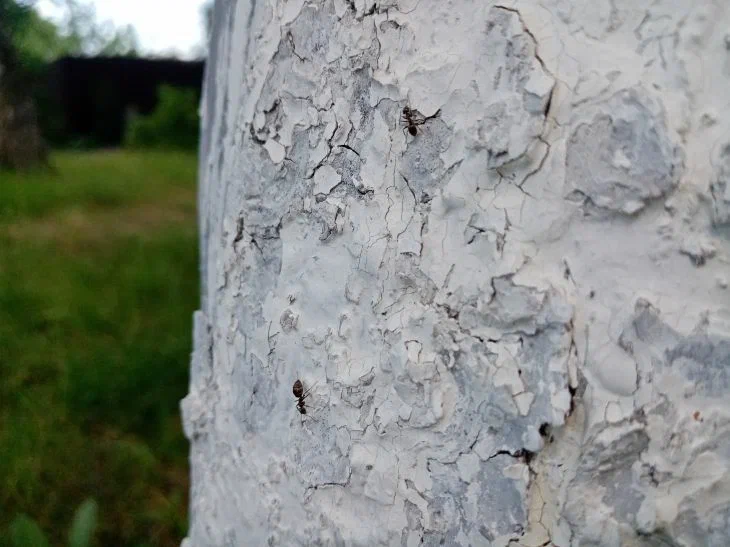The white trunks of the trees seem like a decorative touch, but in reality they are a shield against dozens of threats.
In early spring, the bark suffers from temperature changes: during the day the sun heats it, and at night the frost turns the sap into ice, tearing the tissue.
Whitewash reflects rays and reduces heat, preventing cracks.

But few people know that the composition of the mixture matters. Do not use pure chalk - it washes off after the first rain.
Add 2 kg of lime, 1 kg of clay and 100 g of copper sulfate to a bucket of water. The clay will make the mixture viscous, the copper sulfate will disinfect the bark, and the lime will provide a protective layer.
Timing is key. Don't wait until April: whitewash your trees in late February or early March before the sun becomes active.
And don't limit yourself to just the trunk - paint the skeletal branches up to a third of their length, as this is where frost cracks most often appear.
For young trees with thin bark, reduce the lime concentration by half to avoid burning.
Whitewashing is also a protection against pests. Beetle larvae that overwinter in bark cracks die from contact with lime.
And hares avoid gnawing whitewashed trunks - they don't like the taste of clay. If you want to enhance the effect, add a few drops of tar to the mixture - its smell will scare away rodents for a long time.
After winter, old whitewash often crumbles. Do not apply a new layer over dirt - first clean the trunks with a brush with stiff bristles.
But do it carefully so as not to damage the living bark. And if you find wounds or hollows, cover them with garden pitch before whitewashing - lime should not get on open tissues.
And remember: whitewashing is not a one-time action. In summer, rains will wash away part of the layer, so repeat the procedure in October.
This way, the trees will meet the winter prepared, and in the spring they will once again delight you with health and harvest.
